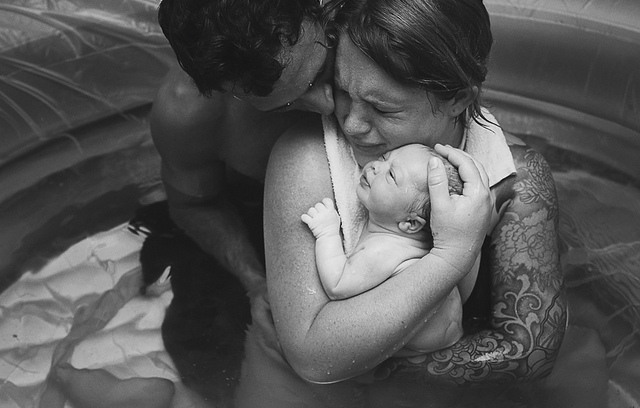An increasing number of expecting women are nowadays considering Water birth because it gives them a gentle, comfortable and natural experience. A water birth happens naturally without any medicine, or epidurals. The women experiences labor pain, and delivery in warm water tub.
Unlike the delivery that happens hospital, with this method, the delivery is performed at birthing centers, or home under the supervision of mid-wives. But not many are aware that the process also has some serious risks associated with it. Before you consider this procedure for your delivery, you need to learn about its advantages and drawbacks.
What is a water birth?
With availability of various birthing options such as hospital, home, and birthing center, a pregnant woman can choose from them depending on her delivery preference and the health of baby. The number of women who are opting for water birth delivery are increasing in the world.
In this procedure, an inflatable, or stationary water tub is used to submerge the expecting mother. You have the choice to deliver your baby either in the water, or out of the water. When this method is performed at birthing center, you get the dual benefits of hydrotherapy, and specialized assistance of expert doctors at birthing hospital. However, the process can also be performed by mid-wives at home.
Can this method be used by every expecting mother?
Water birth delivery is permissible only when you have an uncomplicated pregnancy. This type of pregnancy is characterized by low blood pressure, more than 37 weeks of gestation period, and baby in vertical position (head down). These are the important requirements for undergoing a water birth.
Who should avoid Water Birth?
There are specific cases when Water Birth is not permitted. If a woman shows any of the below signs then she should avoid water birth.
- gestational diabetes,
- macrosomia,
- preeclampsia,
- prematurity, and
- unproven pelvis
Water birth is not recommended after the first labor stage as the cervix is in the fully dilated state.
Benefits of Water Births
Water births have got increasingly performed over the past few decades. It is recognized to offer certain benefits.
Less painful: Due to buoyancy and warmness of water, it is reported that this method is less painful than the delivery at the hospital. When a woman gets immersed in a tub of warm water, it releases a feel-good hormone “oxytocin” in their body, that helps in regulating the strength of the contractions.
In deep water, more oxytocin gets produced, and more pain-relieving endorphins begin to flow in the mother’s brain that brings her to a different consciousness altogether. It enables her body to take necessary delivery steps on its own. In this relaxed state the severity of vaginal tearing is also reduced.
Reduce back pain: When done at the primary stage of labor, an underwater delivering can reduce in the time span of labor. It can even decrease the requirement for epidurals and lower pregnancy induced back pain.
Low C section rate: According to a study performed on woman who delivered via water birth, they were found to have a significantly low cesarean section rate.
Low stress: As the environment is peaceful, natural, and relaxing, many women find it comfortable. It has been reported that women who delivered via this method observed less stress incontinence after delivery in comparison to those who delivered on land.
Greater birth satisfaction: Women who underwent this delivery procedure reported higher birth contentment. The warmness of water, and weightlessness caused due to being immersed in water, disconnected them from the outside world and more connected to their baby.
Risks associated with Water Birth
Infection: By delivering under water, it can cause the water to get contaminated with rectal, and vaginal flora that if baby swallows can cause infection.
Meconium Aspiration: It happens when a baby gets its initial bowel movement prior to birth. When it inhales this polluted amniotic fluid, it can lead to respiratory issues.
Pneumonia: There is also a possibility that the child develops pneumonia within the initial one or two days after birth. It is caused due to fecal contamination, bacteria, and meconium aspiration from tub water.
Drowning: Delivery inside water, can even cause the fetus to sink in the water. This can cause his lungs to fill with water, and obstruct oxygen flow. Along with respiratory distress, there can also be difficulty in regulating the temperature of the body of fetus. There are also possibilities of seizures, and asphyxia to develop in the baby.
Also read: Natural Ways To Induce Labor
Conclusion
So, we have seen that water births are natural, and performed in a relaxing environment, but it leads to a lot of risks and complications such as infection, drowning, and meconium aspiration. It is important to evaluate the pros, against cons, and consult your doctor to understand the complete risks, and reality of your preferred method, to arrive at the safe conclusion.

